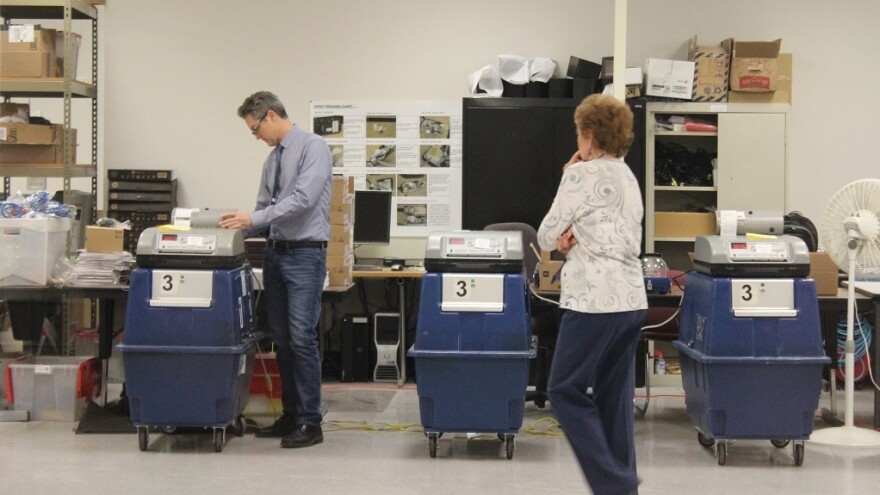Ahead of Election Day next week, election officials around the country are checking and double-checking their equipment to make sure the results are calculated accurately.
Those officials are under increased scrutiny this year with Donald Trump and his allies claiming the voting system could be "rigged" in favor of Democrats. So election administrators around the country are opening the doors to the public to show off the multiple layers of safeguards in the ballot-counting process.
Last week, the ballot tabulation center in downtown Phoenix was buzzing during a dry run ahead of election night.
Mock mail-in ballots were sucked in and scanned through one of Maricopa County's nine tabulation machines as officials from the Arizona secretary of state's office watched. State law requires all voting equipment from each county to pass accuracy tests before the general election.

To get a passing grade, the counting machines' results have to match the pre-marked ballots, said Maricopa County Recorder Helen Purcell.
Maricopa County is Arizona's most populous county and under close scrutiny after voters experienced extremely long lines during the primary election in March.
The county's procedures have evolved considerably since the 1970s when Karen Osborne, who directs elections for Maricopa County, first started working on elections.
"It's no longer just transporting ballots from Point A to Point B with the security of two people. Now it is multiple people doing multiple jobs and each one has to prove the other correct," said Osborne.
Take in-person voting on Election Day, for example. Voters must show ID at the polls, and after they make their selections, the ballots are scanned. A machine records and tallies the votes and saves the paper ballots as a backup. At the end of the night, the ballots and the electronic tally will be transported by separate teams that typically include poll workers from different parties to ballot collection sites around the county.
Once all polling places have delivered their returns to the collection sites, everything is taken downtown and into the glass-enclosed ballot tabulation center that has always been open to the public.
"Everything is run in that room. Nothing is run at the polls, at the polling places. Nothing is run through Wi-Fi, through Internet, so that way these votes are the most secure they can possibly be," said Elizabeth Bartholomew, a spokeswoman for the Maricopa County recorder's office.
Poll sign-in books must match the number of votes cast at a precinct, and each county must also hand-count 2 percent of the precincts for one final accuracy check.
Trump's repeated assertions that the vote is rigged against him rankles these elections officials.
"There are so many checks and balances on this system. It continues to prove itself on a daily basis," said Osborne.
Copyright 2021 KJZZ. To see more, visit KJZZ. 9(MDEwMTk5OTQ0MDEzNDkxMDYyMDQ2MjdiMw004))




